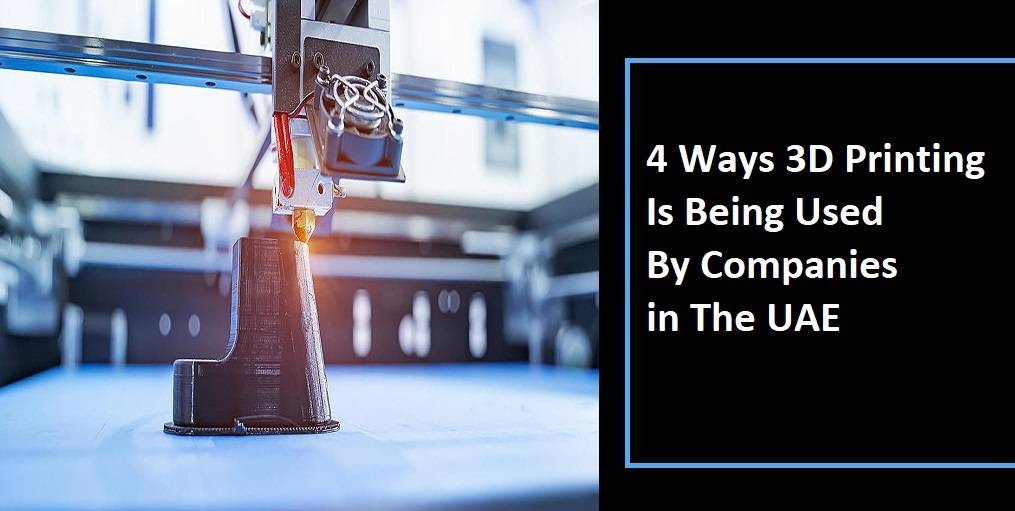
There is no denying that the UAE is emerging as the global hub for 3D printing. From buildings being erected to new developments in the design, medical, and mechanical industries being introduced, companies in the UAE are taking advantage of all that 3D printing and additive manufacturing has to offer. In many ways, the options are limitless as anything you can dream up and design on a computer can be transformed into a 3D printed object.
If you are wondering how companies are using it and why you should consider utilizing it in your business, keep reading to learn about four different ways that companies in the UAE are using 3D printing, as shared by Inoventive 3D Dubai.
1. Architectural
As part of the Dubai 3D Printing Strategy, the emirate of Dubai is aiming to have 25% of all buildings 3D printed by 2030, which is a surefire way of turning Dubai and the UAE into a leading global center of 3D printing. Earlier this year, the world’s first 3D printed office opened in Dubai. Located within Emirates Towers, it took 17 days to print the Office of the Future and 48 hours to construct it, significantly quicker than traditional construction methods. Plus, building and labor costs were reduced by 50 percent when compared with conventional buildings of similar proportions.
This project demonstrates that 3D printed buildings can result in enhanced productivity, higher economic returns, and improved sustainability. However, for architects and firms that aren’t ready to print a building entirely, 3D printing can still be a valuable opportunity to test ideas. Architects can create 3D printed objects to show clients ideas, as having a tangible object makes it easier for everyone involved to visualize the designs. Furthermore, it reduces the time that needs to be spent on creating models, and the models that are produced are printed with high-quality materials.
2. Mechanical
Another industry that is being revolutionized by 3D printing is the mechanical industry. Generally, these mechanical parts have challenging and highly specific shapes that make them difficult to produce in other manufacturing methods. Therefore, in many ways, 3D printing has come to the rescue as the additive manufacturing methods are ideal for mechanical design.
The way that 3D printing works makes it a lot easier for additional design possibilities which enable mechanical producers to find the appropriate balance between strength, weight, and production cost. Also, 3D printing facilitates the creation of a group of parts that otherwise have to be made from several components. This also decreases the number of assembly and welding steps that have to take place. For those who produce or utilize mechanical parts, 3D printing makes the process a lot more efficient and economically friendly.
3. Jewelry
Fine jewelry and wearable accessories can also be manufactured by a 3D printed . For budding accessories designers and those who have been in the industry for years, the emergence of additive manufacturing has created a whole new world of possibilities. Thanks to 3D modeling, anything that a designer can imagine and design on a computer can be created, layer by layer. This means that shapes and details that have never before been produced can now be created.
Additionally, additive manufacturing also reduces the weight of jewelry pieces. This is due to the fact that most 3D printing materials are light (such as plastic powder), and the parts can be hollowed. By creating beautiful jewelry that isn’t heavy, designers are able to create pieces that are more comfortable and practical to wear.
4. Medical
As with the other industries mentioned, 3D printing is bringing a whole range of benefits to the medical world. In the past couple of years, 3D printing has been used to create prosthetics, orthoses and insoles, surgical guides, implants, models, and a variety of other products. What is particularly unique about 3D printing in the medical industry is that its flexibility enables medical professionals to formulate patient-specific devices at a reasonable price. Because 3D printing is so detailed, the products that are printed always fit the patient exactly as expected.
In addition to the affordability and customization that 3D printing brings, it is also able to quickly create these products, which is crucial as medical procedures rarely have a relaxed schedule. Moreover, all medical devices and pieces of equipment must be made from sterilizable materials, which is possible with 3D printing materials.
Final Thoughts
These are just four examples of the hundreds of industries benefiting from the expansion of 3D printing. Creating prototypes from additive manufacturing is now becoming a standard procedure for many companies around the world. This sort of high-quality, functional prototype can be employed to expedite the production of new products, show new projects more clearly, and boost marketing strategies.
If you are interested in incorporating 3D printing or prototyping into your company, reach out to a trusted 3D printing provider today.
Digital Web Services (DWS) is a leading IT company specializing in Software Development, Web Application Development, Website Designing, and Digital Marketing. Here are providing all kinds of services and solutions for the digital transformation of any business and website.

 Tiago Jeronimo
Tiago Jeronimo








